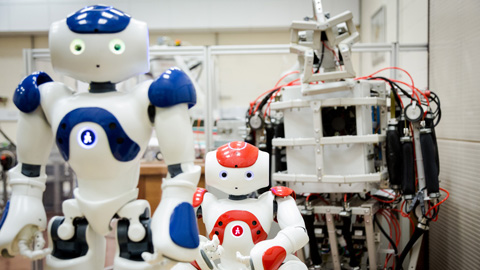Future Robots Could Be More Similar to Human Beings
Today, robots are increasingly developed to react to the stimuli from their environment and to resemble human beings. The days when robots were imagined as metallic machine people are far gone.

Back in the 1950s and 60s, robots were mostly thought of as metallic figures shaped like humans. The image was strongly influenced by androids and half-human, half-robot cyborgs in science fiction movies.
– The visions of the sci-fi movies have had a strong impact on people’s mental image of robots. It is clear that they have also influenced the researchers who develop robots, says Professor of Digital Culture Jaakko Suominen.
Among other things, Suominen has researched people’s conceptions of robots in the first half of the 20th century. For example, in the 1950’s, people believed that robots would do all the mechanical work in the future thus freeing up time for humans to do something else.
– On the other hand, a new question arose: what would people do with all the free time? It was mulled over for a great deal back then but no one ever came up with a good answer.
The Advent of Soft Robots
 New robots will not necessarily correspond to the image of machine humans. Doctoral Candidate Fahimeh Farahnakian (in the photo on the left) from the Department of Information Technology, who researches artificial intelligence and its applications, says that in the future robots can be small and have silicon exteriors.
New robots will not necessarily correspond to the image of machine humans. Doctoral Candidate Fahimeh Farahnakian (in the photo on the left) from the Department of Information Technology, who researches artificial intelligence and its applications, says that in the future robots can be small and have silicon exteriors.
– Soft and flexible robots could, for example, work in collapsed buildings that are too dangerous for humans to enter. A robot with a silicon exterior would fit better into small spaces and wouldn’t damage its surroundings unlike a traditional metal robot.
In the future, robots can work in even smaller and more confined spaces. This opens up advantageous possibilities for medicine, for example.
– Tiny robots could be utilised in surgery, among other things. They could even replace the instruments in the operation rooms by operating in the human cells or by distributing drugs during the surgery, says Farahnakian.
Robots’ Communication with Each Other and Their Surroundings under Development
In future, it is possible that robots could send information to and communicate with each other. Situations where this would be useful are, for example, rescue work and clearance of collapsed buildings.
Both the communication between robots and their relationship with their surroundings are points of development in robotics. As technology develops, robots can be built to react more and more like human beings.
– The robot’s ”skin” could be full of sensors that are sensitive to touch and it could blink its eyes, says Farahnakian.
In addition, mechanical pets could have soft or even furry exteriors and their control on emotions and reactions to the stimuli in their environment would be more sophisticated.
Finland Develops Robots for Elderly Care
Most of the robots in the world today are utilised by industry. Almost half of them are in operation in Asia and Australia.
European robotics is particularly known for robots developed for elderly care and researchers are studying how to combine robotics and wellbeing also in Finland.
– The development of robots, which are designed for aiding and caring the elderly, is Finland’s field of expertise in robotics. Robots could help, for example, in the distribution of medicine or in the transportation of goods to the patients, says Farahnakian.
Text: Maria Ojanen
Photos: Maria Ojanen and M. Scott Brauer
Translation: Mari Ratia